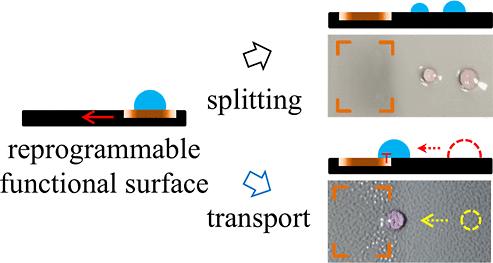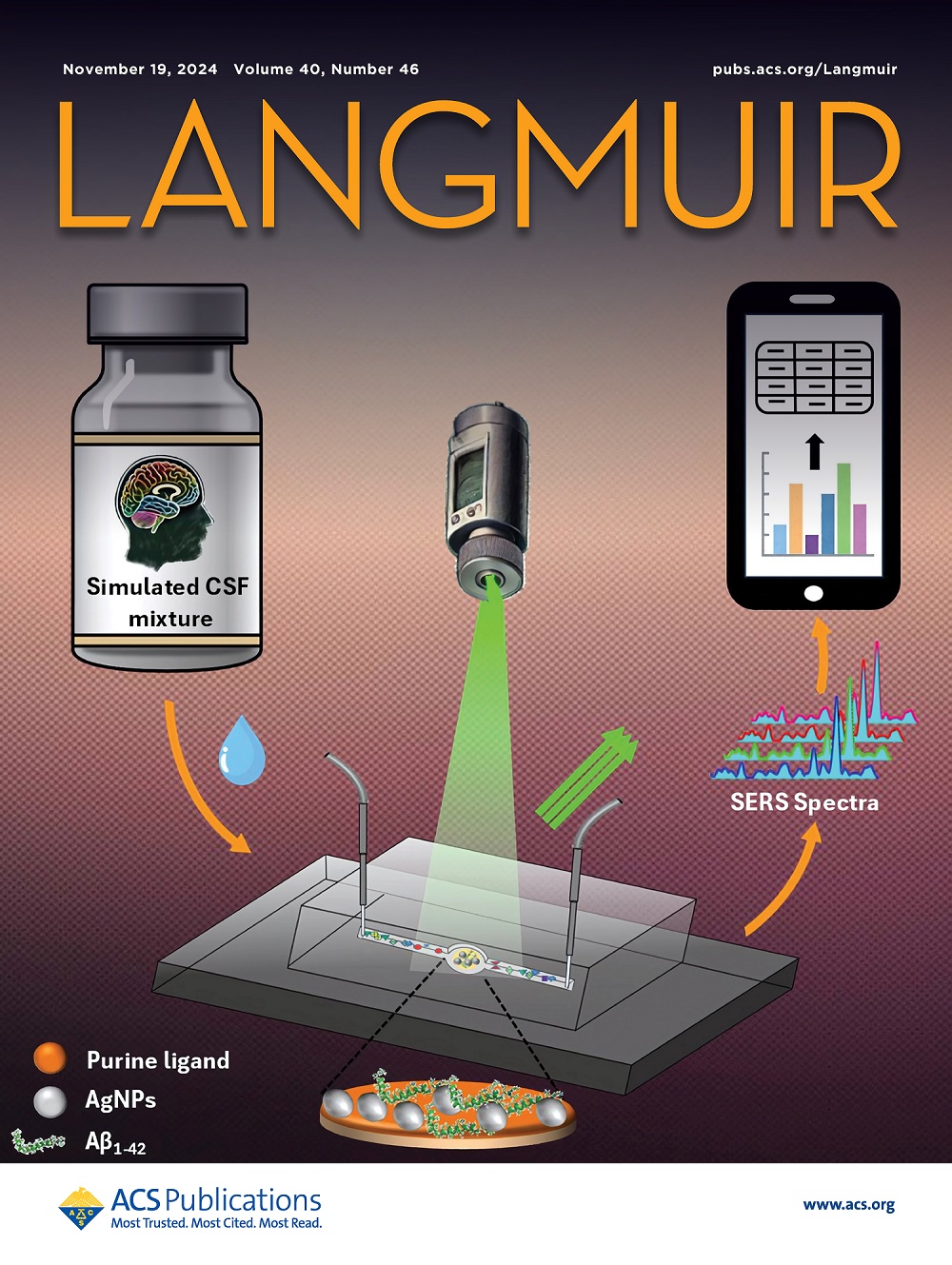Multimodal Splitting and Reciprocating Transport of Droplets on a Reprogrammable Functional Surface
IF 3.7
2区 化学
Q2 CHEMISTRY, MULTIDISCIPLINARY
引用次数: 0
Abstract
Droplet manipulations have important applications in many fields, especially droplet splitting and transport in aseptic operations or biochemical reagent analysis. However, droplet splitting or transport on existing functional surfaces is limited to predesigned microstructures or fixed patterns. It remains a challenge to realize reprogrammable surface microstructures for freely controllable droplet splitting and transport. In this study, a flexible technique for both the multimodal splitting and reciprocating transport of droplets on one surface is proposed. Such a surface is prepared with a facile fabrication method by premixing magnetic particles and softener into the polymer solvent matrix and immersing the solidified matrix in a lubricant. The movable wettability gradient is generated on the surface by an external magnetic field, which can act as an invisible “air knife” to split the droplet in multiple modes. The mechanism and critical conditions of droplet splitting are analyzed and revealed theoretically. Furthermore, the microstructural configurations and surface wettability can be reprogrammed by modulating the magnetic field strength and gradient. Accordingly, the splitting behavior of the droplet is transformed into the reciprocating transport behavior. The influencing factors of such behavior have also been analyzed. The reported reprogrammable manipulation of the droplet on one surface provides a versatile prototype for the actuation of droplets in microfluidic and biological analysis devices.

求助全文
约1分钟内获得全文
求助全文
来源期刊

Langmuir
化学-材料科学:综合
CiteScore
6.50
自引率
10.30%
发文量
1464
审稿时长
2.1 months
期刊介绍:
Langmuir is an interdisciplinary journal publishing articles in the following subject categories:
Colloids: surfactants and self-assembly, dispersions, emulsions, foams
Interfaces: adsorption, reactions, films, forces
Biological Interfaces: biocolloids, biomolecular and biomimetic materials
Materials: nano- and mesostructured materials, polymers, gels, liquid crystals
Electrochemistry: interfacial charge transfer, charge transport, electrocatalysis, electrokinetic phenomena, bioelectrochemistry
Devices and Applications: sensors, fluidics, patterning, catalysis, photonic crystals
However, when high-impact, original work is submitted that does not fit within the above categories, decisions to accept or decline such papers will be based on one criteria: What Would Irving Do?
Langmuir ranks #2 in citations out of 136 journals in the category of Physical Chemistry with 113,157 total citations. The journal received an Impact Factor of 4.384*.
This journal is also indexed in the categories of Materials Science (ranked #1) and Multidisciplinary Chemistry (ranked #5).
 求助内容:
求助内容: 应助结果提醒方式:
应助结果提醒方式:


